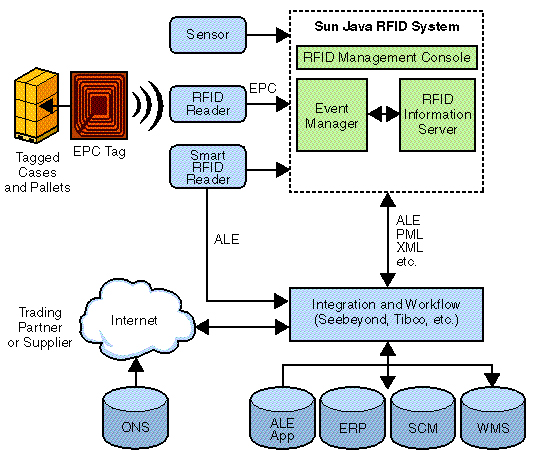RFID Middleware
24/11/2023
Le middleware RFID le jump'éel intermedia ba'ax ku yaantalo'ob ti' le flujo datos ichil le extremo recopilación datos RFID yéetel le yaan informático ti' ka' plano, yéetel le middleware meyaj bey filtrado datos, Distribución datos, yéetel u integración datos (Bey le agregación datos ya'ab lectores)
Le middleware je'el u páajtal u llamado u chúumukil le molayil RFID, as it can accelerate the introduction of critical applications.
Middleware is divided into software middleware and hardware middleware
Hardware middleware: multi-serial board, special middleware, etcetera
Software middleware: data filters or distribution systems
It can be understood that middleware is the data processing part between the reader and the MIS
There are three stages of development of RFID Middleware
From the perspective of development trends, RFID middleware can be divided into three categories of development stages:
Application Middleware Development Stages
The initial development of RFID is mostly for the purpose of integrating and connecting RFID readers, and at this stage,
RFID reader manufacturers take the initiative to provide simple APIs for enterprises to connect the back-end system with RFID readers. From the perspective of the overall development structure, at this time, the enterprise has to spend a lot of costs to deal with the connection of the front-end and back-end systems, and usually the enterprise will evaluate the cost-effectiveness and key issues of the introduction through the pilot project at this stage.
Infrastructure Middleware Development Stage
This stage is a key stage for the growth of RFID middleware. Due to the powerful application of RFID, key users such as WalMart and the U.S. Department of Defense have successively planned and introduced RFID technology in Pilot Project, prompting international manufacturers to continue to pay attention to the development of RFID-related markets. At this stage, the development of RFID middleware not only has basic data collection, filtering and other functions, but also meets the connection needs of enterprise Devices-to-Applications, and has the management and maintenance functions of the platform.
Solution Middleware Development Stage
In the future, in the mature process of RFID tags, readers and middleware, various manufacturers propose various innovative application solutions for different fields, such as Manhattan Associates proposed “RFID in a box”, enterprises no longer need to worry about the connection between front-end RFID hardware and back-end application systems, the company and Alien Technology Corp in RFID hardware cooperation, the development of Microsoft .Net platform-based middleware has developed the Supply Chain Execution (SCE) solution for the company’s more than 1,000 existing supply chain customers, and enterprises that originally used Manhattan Associates SCE Solution can quickly use RFID on their existing application systems to enhance the transparency of supply chain management by simply using “RFID in a box”.

Two application directions of RFID Middleware
With the gradual maturity of hardware technology, the huge software market opportunities prompt information service manufacturers to continue to pay attention to and invest early, RFID middleware in the RFID industry applications in the nerve center, especially by the attention of international manufacturers, the future application can be developed in the following directions:
Service Oriented Architecture Based RFID Middleware
The goal of Service Oriented Architecture (SOA) is to establish communication standards, break down the barriers of application-to-application communication, automate business processes, support business model innovation, and make IT more agile to respond to needs faster. Tune', in the future development of RFID middleware, it will be based on the trend of service-oriented architecture to provide enterprises with more flexible and flexible services.
Security Infrastructure
The most questionable aspect of RFID application is the commercial information security issues that may be caused by a large number of vendor databases connected to the RFID back-end system, especially the information privacy rights of consumers. Through the arrangement of a large number of RFID readers, human life and behavior will be easily tracked because of RFID, WalMart, Tesco early RFID Pilot Project have suffered resistance and protest because of user privacy issues. To this end, some chip manufacturers have begun to add the “shielding” function to RFID chips. There is also a kind of “RSA Blocker tag” that can interfere with RFID signals, which disrupts the RFID reader by emitting wireless radio frequency, so that the RFID reader mistakenly thinks that the collected information is spam and misses the data, so as to achieve the purpose of protecting consumer privacy.
(Fuente: Shenzhen Seabreeze Tarjeta na'at Co., Ltd.)
Ma' xaan ka' utsak xan
Aidc, Billete electrónico, Pegatinas, Etiqueta RFID, Pulsera NFC, Llavero, Asistencia k'iin, Kaambalil yo'osal u muuk'
Ju'unil©2013 | Shenzhen Seabreeze SmartCard Co., Ltd. | Sitemap



























































































 Fung
Fung
 Gerente u Ventas
Gerente u Ventas